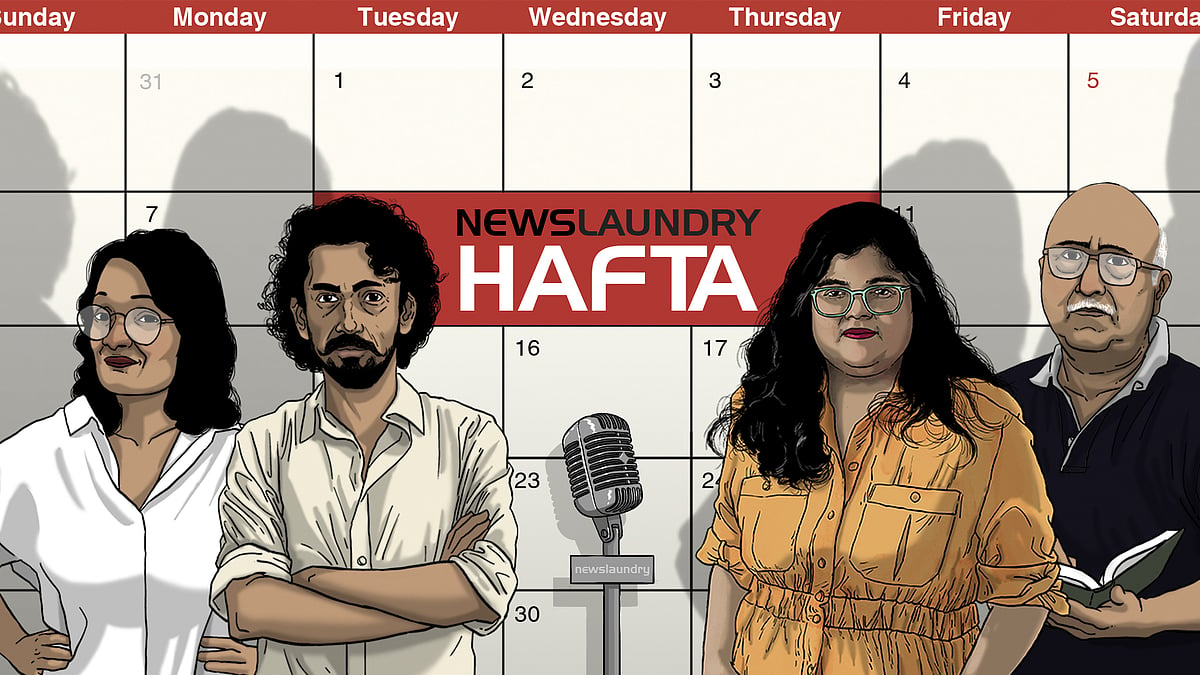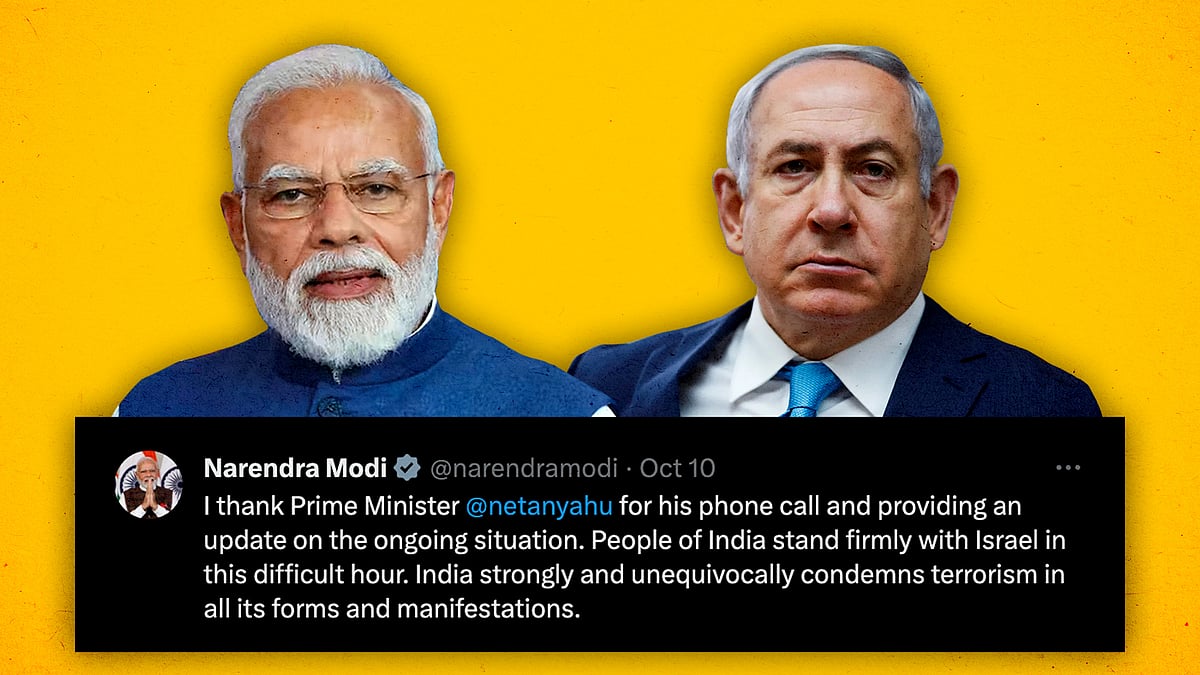‘No moderation, algorithm, paid blue ticks’: How social media fuelled fake news on Israel-Palestine conflict
Many blue tick or premium accounts have been sharing fake news on X.
A gruesome video of a man beheading a child went viral on social media last week — initially shared by a premium or verified Twitter account as evidence of Hamas’ attack on Israel. The video was viewed by millions online, and shared with hashtags #IslamIsTheProblem and #IsraelUnderAttack.
But was it a video of the escalated Israel-Palestine conflict? Fact-checkers found that the clip was unrelated to Israel or Palestinian militant group Hamas, and was instead shot in Syria in 2016. The false claims were quickly debunked by fact-checkers using multiple technological tools — but the damage had already been done.
The video had received around 2.5 million views by the time organisations reported it as misleading.
Credible information has been collateral damage in the Israel-Palestine conflict, in which at least 2,670 Palestinians and 1,400 Israelis have been killed so far.
Within days of the escalation that began on October 8, fact-checkers reported being faced with a huge volume of misinformation and disinformation.
The fact-checkers who spoke to Newslaundry called the barrage of misinformation “unprecedented,” with many pointing to the role of X, formerly known as Twitter, in fuelling it.
Misinformation included clips from a video game depicted as Hamas shooting down an Israeli helicopter, an old video falsely shared with claims that Palestinians were faking death, a clip from an ad film shooting posted as a visual from the Israel-Palestine conflict, and BTS footage of an awareness video falsely shared as “Palestinians faking injuries”.
“In my memory, I’ve never seen so much false content circulating. Be it images, videos, or statements,” Caroline Quevrain, a journalist with the fact-checking bureau of France-based media firm TF1, told Newslaundry. “Besides TikTok, which has virtually no moderation of its content, Twitter is now playing a very active role in the propagation of fake news.”
Verified accounts, algorithm on ‘explosive’ Twitter
On October 12, the European Union made a legally binding request for information to X over its handling of misinformation, hate speech, and violent terrorist content related to the Israel-Palestine conflict.
Journalists and fact-checkers have been consistently pointing out the social media platform’s failure to clamp down on the rampant misinformation related to the conflict. At the centre of the criticisms are the new policies introduced at X under Elon Musk, and the many ‘verified’ or blue-tick accounts that have been posting or sharing fake news.
Under its new policies, X does not only favour tweets by its blue-tick subscribers but also incentivises them. Tweets by verified users are given priority on the home feed. If the posts go viral, the verified “creators” are eligible for payments from X.
Abhilash Mallick, editor of Quint WebQoof – an IFCN certified fact-checking initiative, said the monetary incentives behind getting more views also makes people share sensational content.
“The amount of misinformation and disinformation on X is most likely linked to its premium service, which promotes content shared by verified users,” he said, adding that they had identified at least 39 premium Twitter accounts that have been sharing misinformation and disinformation on the conflict.
Prominent foreign policy expert Ian Bremmer said the disinformation on the conflict being “algorithmically promoted” on X was “unlike anything”.
Nivedita Niranjankumar, news editor (South) at fact-checking website Boom, said that Twitter has been “explosive”, and they suspect “algorithmic changes” and the paid verification of accounts to be behind it.
“Twitter this time has been explosive, and we suspect the algorithmic changes brought by Elon Musk and his disregard for verification, plus giving away blue ticks to anyone willing to pay has compromised the platform,” said Niranjankumar.
She said several verified Indian accounts on X have also been spreading misinformation, particularly targeting Palestinians. “The pay for verification feature is also being used by several Indians to spread fake news. We have listed eight X accounts, all of them with blue ticks, feeding the disinformation campaign, mostly targeting Palestine negatively, or being supportive of Israel. Some accounts in the list are MrSinha_ , ajaychauhan41 and JIX5A.”
A popular verified right-wing account on X, MeghUpdates, shared an old photo of Israel Prime Minister Benjamin Netanyahu and his son, claiming that it was a recent picture of Netanyahu sending off his son to fight against Hamas. But it was later found that the picture was taken about nine years ago, before the Israeli PM’s son joined the Israel Defense Forces for three-year mandatory service.
Another X user, ajaychauhan41, shared a video of fighter jets, claiming it to be Israel’s counterattack against Hamas. However, it was fact-checked as a clip from a stimulator video game called DCS World. Boom reportedly fact-checked his false claims on the Israel-Palestine conflict at least four times in four days.
While Twitter is purportedly the worst offender, the EU has also written to TikTok, Meta (which owns Facebook and Instagram) and Google, warning them to remove disinformation from their platforms.
Fact-checkers told Newslaundry that TikTok too has been a breeding ground for misinformation, and has “virtually no moderation of its content”.
A TikTok video that was viewed by more than 3,00,000 people “promoted conspiracy theories about the origins of the Hamas attack, including false claims that it was orchestrated by the media”, said a report on CNN.
Double misinformation compared to Russia-Ukraine
The Quint’s WebQoof had published around 20 stories fact-checking misinformation in Hindi and English in connection with the Russia-Ukraine war in the first week of the fighting.
But the numbers were more than double in the case of the Israel-Palestine conflict. In the first week of the escalated fighting between Israeli forces and Hamas militants, the website published over 45 fact-checks related to the conflict.
A fact-checker from a mainstream news organisation told Newslaundry that among the photos and videos being shared with false claims, several were from the Russia-Ukraine war depicted as visuals from Israel and Palestine.
Angie Holan, director of the International Fact Checking Network, which supports over 100 fact-checking organisations globally, pointed out that misinformation was an ongoing societal problem and followed almost all major world events.
“Measuring the quantity of misinformation after a major world event remains frustratingly difficult. It’s impossible to say with any quantitative accuracy whether there is more information or less,” Holan said. “It also remains a challenge to make overall assessments about the sources of misinformation.”
Mallick of Quint WebQoof also iterated that visuals from other countries were being passed off as those from the conflict. “It has been difficult to get verified information from the ground because of how polarised things are. At the same time, visuals from other countries are being shared as those from the conflict, so fact-checkers and journalists from those countries are helping in understanding the context behind the visuals in the viral claim.”
Meanwhile, Niranjankumar from Boom said they use digital investigation tools to identify and debunk false claims. “Generally, the first thing we do is scan through X, Facebook and Instagram for posts using keywords in several languages including English and Hindi related to the event, such as Israel, Palestine, Hamas, among others. After this, for claims that involve old or unrelated visuals we use digital investigation tools, get quotes from the correct sources and write a fact check.”
She added that there is a network of fact-checkers across countries that help coordinate and corroborate with verified information on the conflict.
‘Organised networks’ to spread propaganda
An investigative report on NBC News said a propaganda network of 67 accounts on X has been coordinating a campaign of posting false and inflammatory content relating to the Israel-Palestine conflict.
Many of these 67 accounts, including verified accounts, earlier posted contents on professional basketball or life in Japan, but they began posting similar content as soon as the conflict escalated, the report said. It highlighted that the accounts used the same phrases in many instances.
Meanwhile, in India too, several verified accounts have been at the helm of the alleged disinformation campaign, mainly against the Palestinians, Boom reported.
The report said that the organisation has fact-checked some verified accounts multiple times for spreading disinformation on the conflict.
 Between the ‘new’ Middle East and media’s myopia, a shrinking Palestinian voice
Between the ‘new’ Middle East and media’s myopia, a shrinking Palestinian voice  Hafta 454: Whatʼs happening in Israel and Palestine?
Hafta 454: Whatʼs happening in Israel and Palestine?  Why India’s MEA still hasn’t issued an official statement on Israel-Palestine
Why India’s MEA still hasn’t issued an official statement on Israel-Palestine